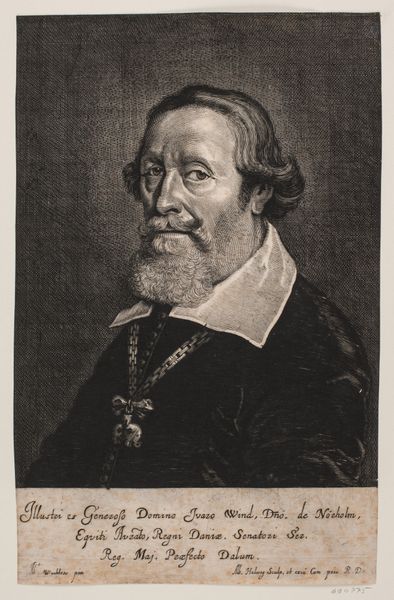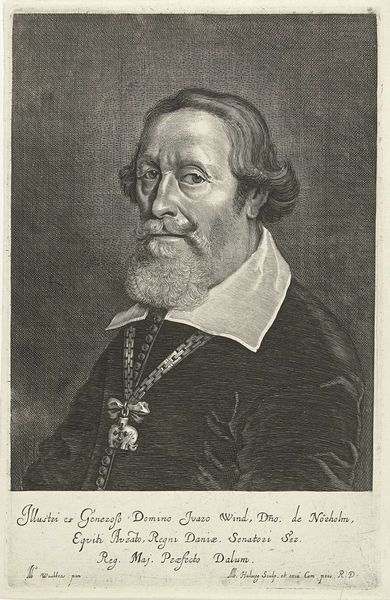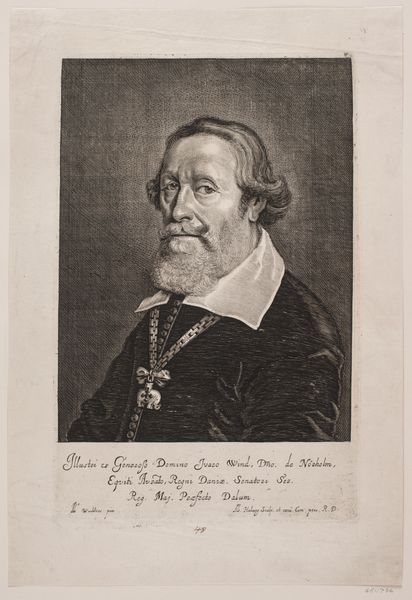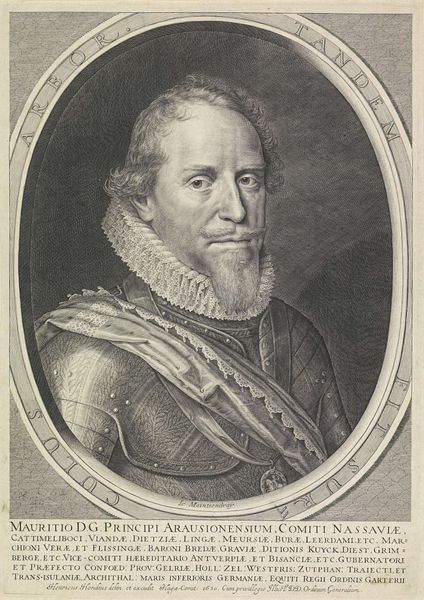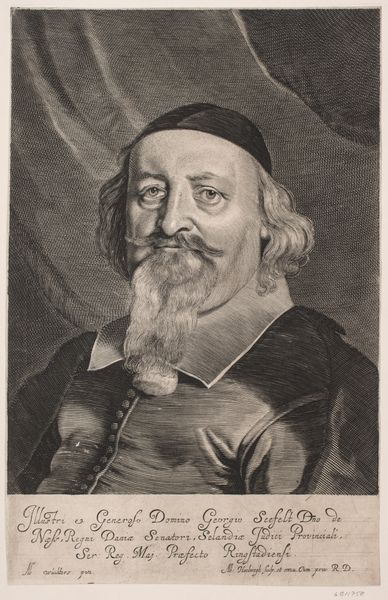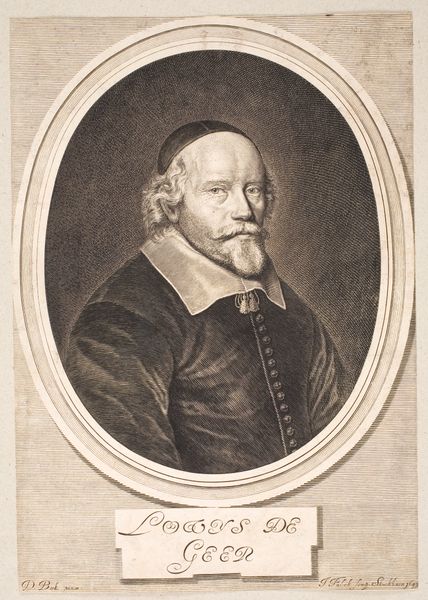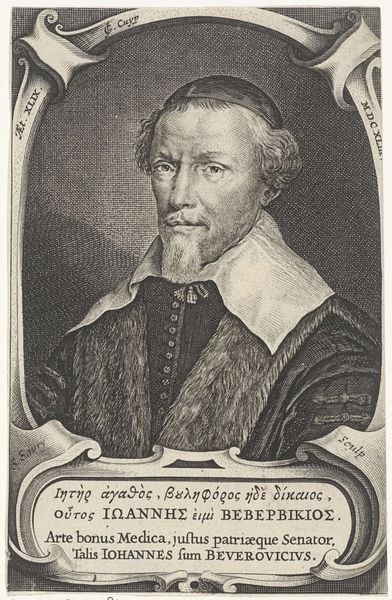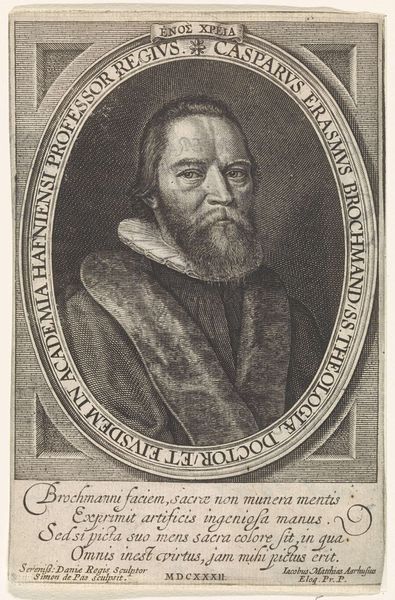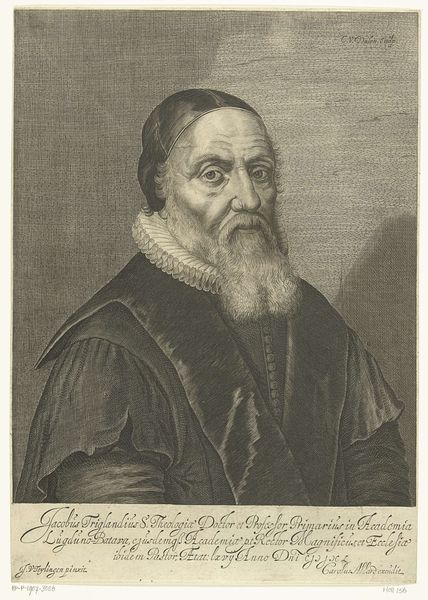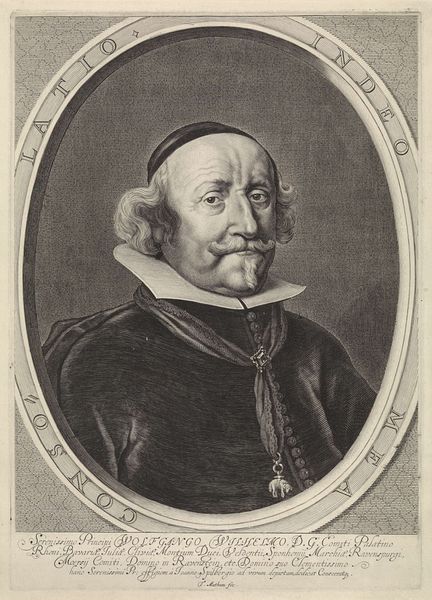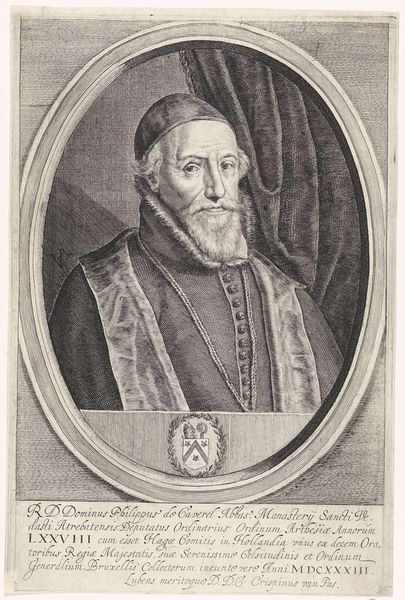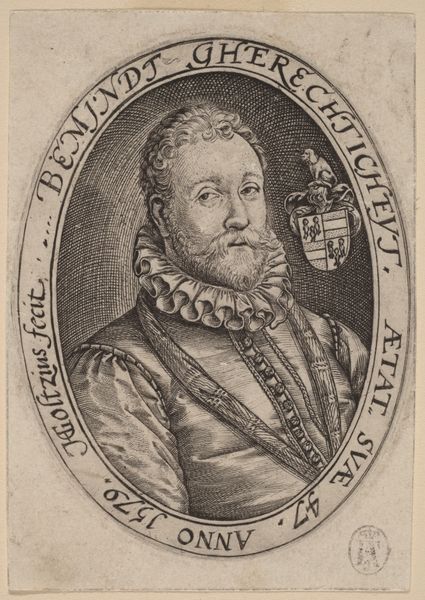
print, engraving
#
portrait
#
baroque
# print
#
engraving
Dimensions: 308 mm (height) x 197 mm (width) (plademaal)
Editor: This is "Iver Vind," an engraving created between 1655 and 1659 by Albert Haelwegh. It’s currently housed in the SMK, the National Gallery of Denmark. I’m struck by the incredible detail achieved in this print; the textures feel so tactile. What formal elements stand out to you in this piece? Curator: The density of the cross-hatching to create tonal variations is quite compelling. Observe how the artist manipulates the density of the lines to render the contours of Vind's face and beard. It suggests volume through strategic light and shadow play, doesn't it? Editor: Yes, definitely! It's amazing how the artist creates depth on a flat surface. The way the light catches the chain, for example—how the engraver manages that illusion. Is the symmetry also part of the overall design? Curator: Symmetry plays a role, certainly, lending the subject an air of stateliness appropriate for a portrait. Yet consider how the subtle asymmetry—the slight tilt of the head, the differing textures within the beard—imbues the work with a sense of lively realism. Editor: That makes sense. So, the artist uses both symmetry and asymmetry to create an interesting visual balance? Curator: Precisely. And how would you say the collar's stark white contrasts with the dark fabric? This juxtaposition isolates the head, demanding visual attention, doesn't it? Editor: It does. I hadn't thought about it that way before, but you're right, it's a very effective way of focusing the viewer’s gaze. I’ve gained a better understanding of the sophisticated techniques used. Curator: And I appreciate your observation regarding texture. Engaging with such detailed works reveals that surface treatments profoundly impact the viewing experience.
Comments
No comments
Be the first to comment and join the conversation on the ultimate creative platform.
